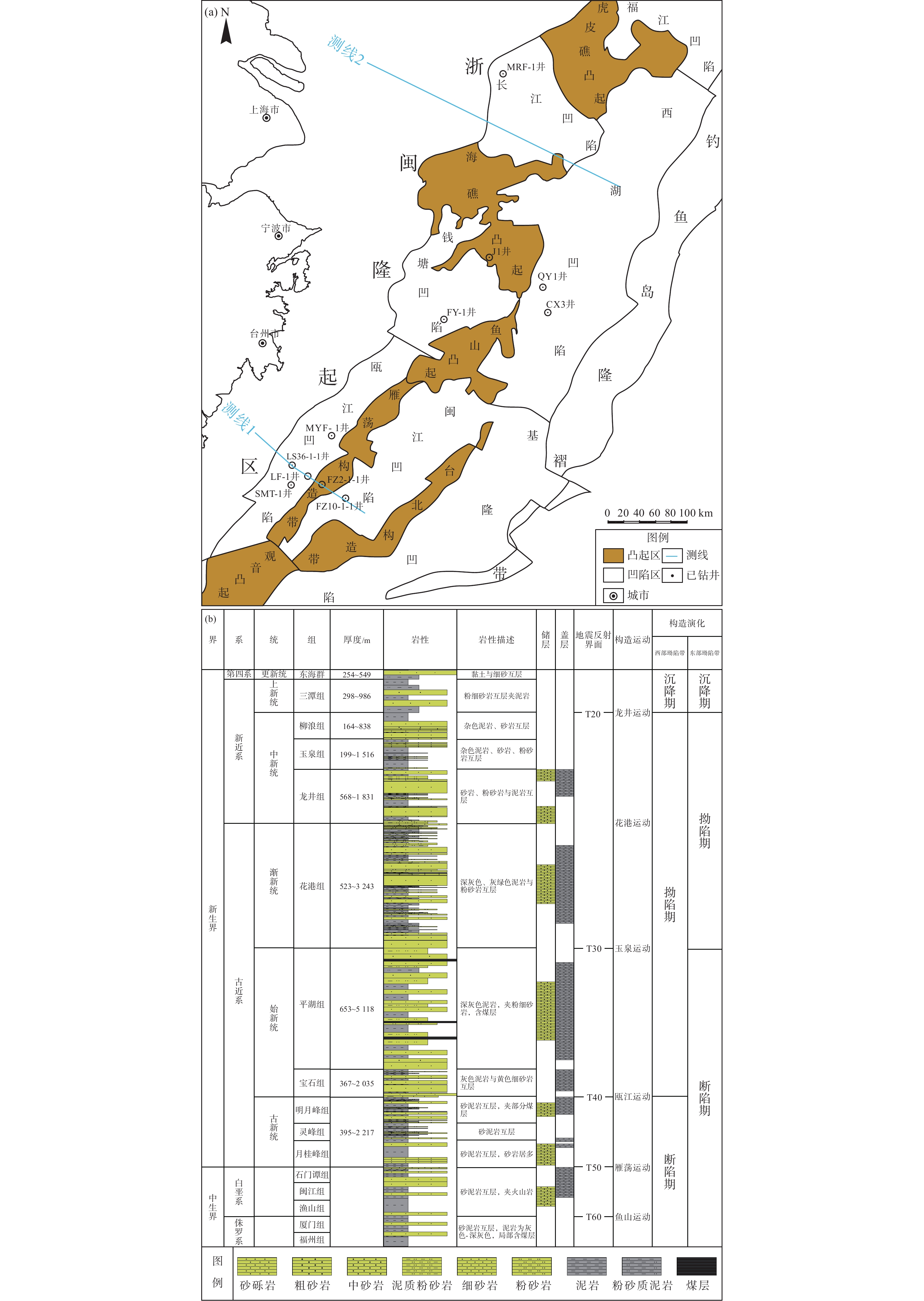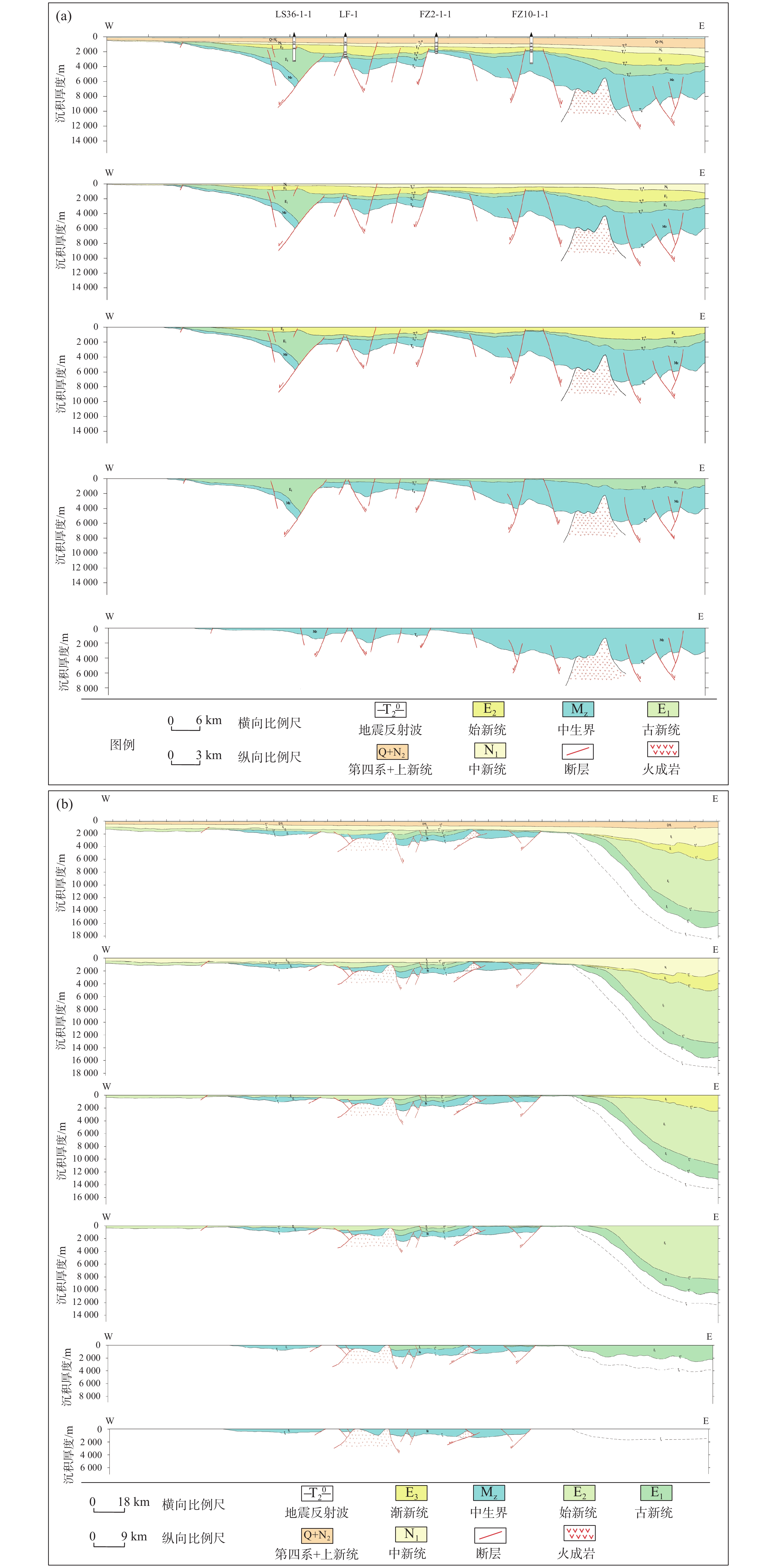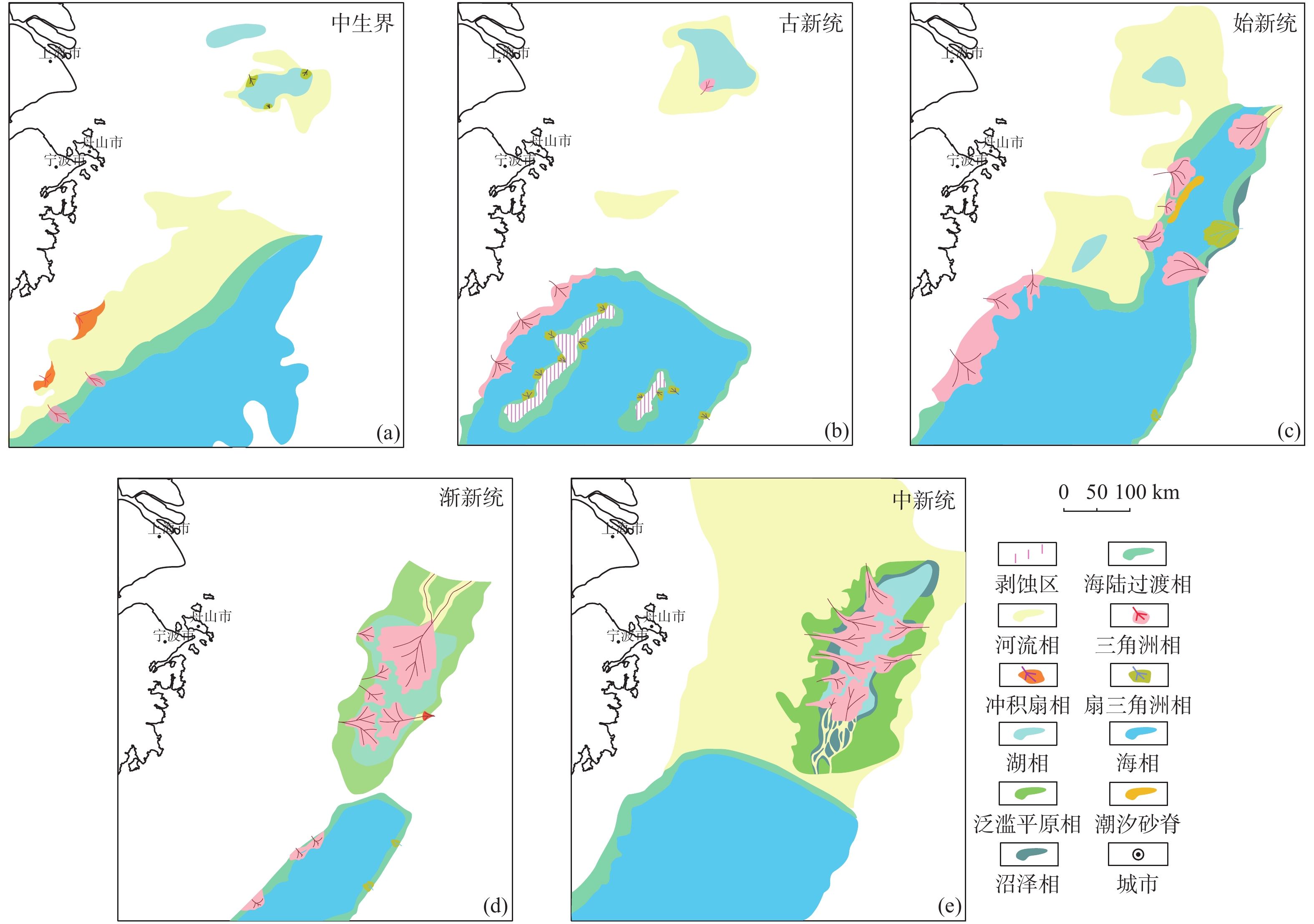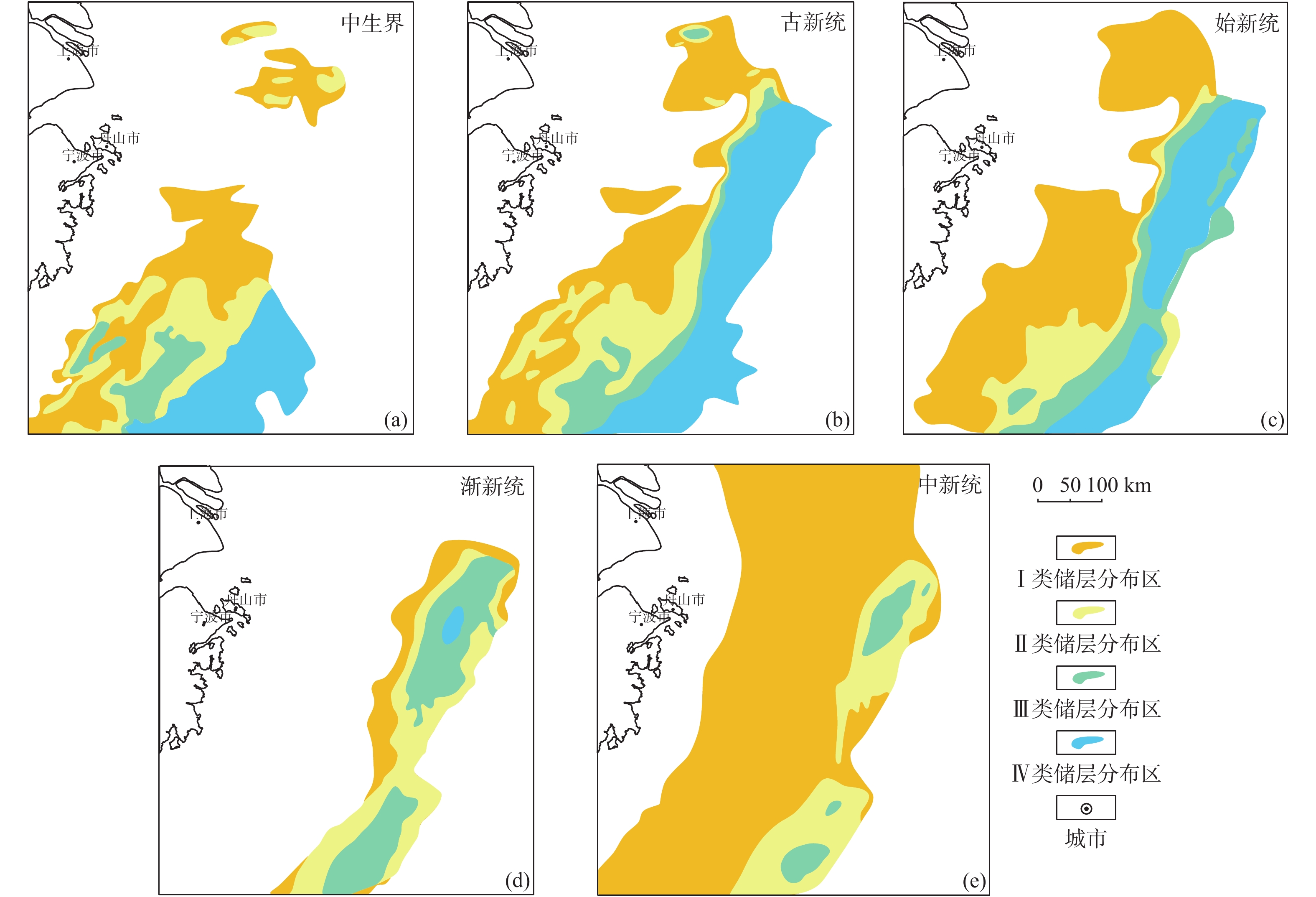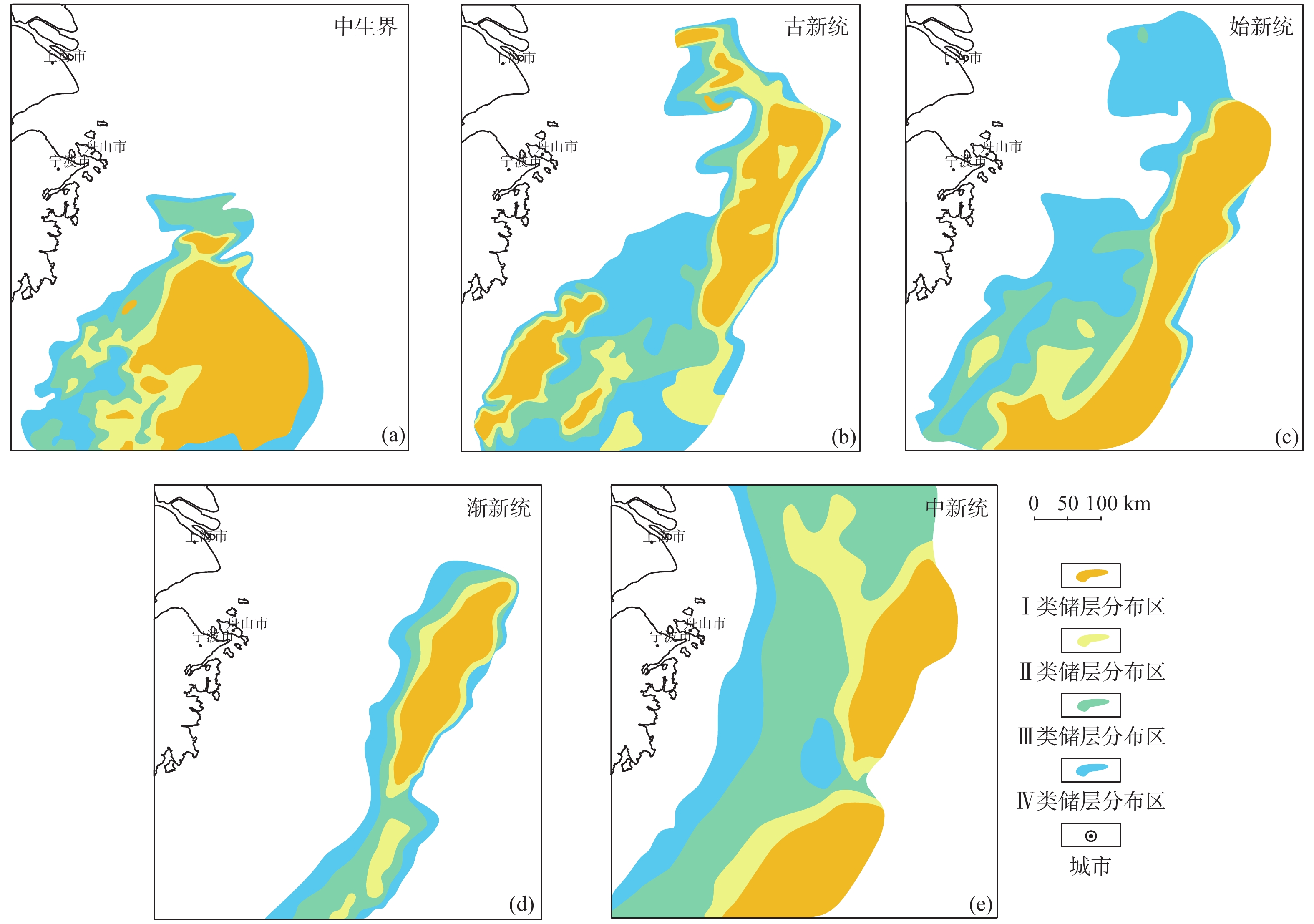Reservoir-cap combination optimization and assessment of CO2 geological storage in East China Sea shelf basin
-
摘要:
东海陆架盆地是中国最大的近海沉积盆地,具有封存潜力大、近碳源、勘探程度高等特点,是CO2地质封存的极佳场所。本文对东海陆架盆地构造、沉积等基础地质条件进行分析,结合钻井、地震资料建立储、盖层的评价标准,优选储盖组合,圈定有利区。结果表明,瓯江凹陷古新统、西湖凹陷渐新统和中新统具备CO2封存的有利地质条件;有利储盖组合具备“纵向分层系、平面分区带”的特征:纵向上,东、西部储盖组合分布存在差异,东部集中在渐新统和中新统,西部集中在古新统和始新统;平面上,东部有利储盖分布区集中在西湖凹陷,西部有利区集中在瓯江凹陷,盆地南部有利区分布在各构造单元的西侧斜坡。本文首次对东海陆架盆地CO2储、盖层展开针对性评价,圈定有利储盖组合发育区,可以为华东地区CO2离岸封存提供地质依据和应用参考。
Abstract:The East China Sea shelf basin, the largest offshore sedimentary basin in China, is recognized as an exceptional site for geological CO2 storage due to its substantial storage potential, proximity to carbon sources, and advanced exploration maturity. In this study, we investigated the basin’s structural and sedimentary geological conditions and established assessment criteria for reservoir-caprock layers by integrating drilling and seismic data, thereby optimizing reservoir-caprock combinations and delineating favorable zones. Results demonstrate that the Paleocene strata in the Oujiang Sag and the Oligocene-Miocene strata in the Xihu Sag exhibit favorable geological conditions for CO2 storage. Vertically, the distribution of reservoir-caprock combinations differs between the eastern and western regions. The eastern basin hosts predominantly in the Oligocene and Miocene sequences, while the western basin in the Paleocene and Eocene sequences. Horizontally, favorable zones in the eastern basin clustered within the Xihu Sag, whereas the western basin focused in the Oujiang Sag. In the southern basin, favorable zones distribute along the western slopes of structural units. This study presents the first targeted assessment of CO2 storage potential in the East China Sea shelf basin to identify optimal reservoir-caprock zones by combining sedimentary distribution patterns. The findings provide critical geological insights and practical references for implementing offshore CO2 storage strategies in East China.
-

-
表 1 东海陆架盆地储层评价标准
Table 1. Assessment criteria of reservoir in the East China Sea shelf basin
储层类别 Ⅰ Ⅱ Ⅲ Ⅳ 厚度/m >100 100~70 70~40 <40 埋深/m 1 000<D<2 000 2 000~3 000 3 400~5 500 > 5500 砂地比/% >60 60~30 30~10 <10 孔隙度/% Φ≥20 15≤Φ<20 10≤Φ<15 Φ<10 渗透率/10−3 μm2 K≥40 40≤K<3 3≤K<0.2 K<0.2 表 2 东海陆架盆地盖层评价标准
Table 2. Assessment criteria of caprock in the East China Sea shelf basin
盖层类别 Ⅰ Ⅱ Ⅲ Ⅳ 岩性 泥岩、钙质泥岩 含砂泥岩 粉砂质泥岩 泥质粉砂岩 厚度/m >350 350~250 250~150 <100 连续性 连续,稳定 较连续,较稳定 连续性较差,较不稳定 连续性差,不稳定 渗透率/10−3 μm2 K<0.001 0.001≤K<0.01 0.01≤K<0.1 K>0.1 二次截留能力 多套,分布广 单套,分布广 多套,局部分布 单套,局部分布 -
[1] 曹默雷,陈建平. CO2深部咸水层封存选址的地质评价[J]. 地质学报,2022,96(5):1868-1882. doi: 10.3969/j.issn.0001-5717.2022.05.022
CAO M L,CHEN J P. The site selection geological evaluation of the CO2 storage of the deep saline aquifer[J]. Acta Geologica Sinica,2022,96(5):1868-1882. doi: 10.3969/j.issn.0001-5717.2022.05.022
[2] 曹珂,吴林强,王建强,等. 我国海洋地质碳封存研究进展与展望[J]. 中国地质调查,2023,10(2):72-76.
CAO K,WU L Q,WANG J Q,et al. Progress and perspective of marine geological carbon storage in China[J]. Geological Survey of China,2023,10(2):72-76.
[3] 陈建文,孙晶,杨长清,等. 东海陆架盆地新生界咸水层二氧化碳封存地质条件及封存前景[J]. 海洋地质前沿,2023,39(10):14-21.
CHEN J W,SUN J,YANG C Q,et al. Geological conditions and prospects of carbon dioxide storage in the Cenozoic saline water layers of the East China Sea shelf basin[J]. Marine Geology Frontiers,2023,39(10):14-21.
[4] BACHU S . Sequestration of CO2 in geological media:criteria and approach for site selection in response to climate change[J]. Energy Conversion and Management,2000,41(9):953-970.
[5] FRANKLIN M. Storage of carbon dioxide in geologic formations[J]. Journal of Petroleum Technology,2004,56(9):90-97. doi: 10.2118/88842-JPT
[6] 张琳琳,赖枫鹏,董银涛,等. 盐水层地质参数对CO2封存效果的评价[J]. 煤炭学报,2024,49(9):3932-3943.
ZHANG L L,LAI F P,DONG Y T,et al. Research on evaluation of CO2 storage effect by geological parameters of brine layer[J]. Journal of China Coal Society,2024,49(9):3932-3943.
[7] 路萍,白勇,刘伟刚,等. 鄂尔多斯盆地马家沟组二氧化碳地质封存有利区优选[J]. 地质论评,2021,67(3):816-827.
LU P,BAI Y,LIU W G,et al. Optimization of favorable areas for carbon dioxide geological storage in Majiagou Formation in Ordos Basin[J]. Geological Review,2021,67(3):816-827.
[8] 祁生文,郑博文,路伟,等. 二氧化碳地质封存选址指标体系及适宜性评价研究[J]. 第四纪研究,2023,43(2):523-550. doi: 10.11928/j.issn.1001-7410.2023.02.19
QI S W,ZHENG B W,LU W,et al. Investigation of indexes system and suitablility evaluation for carbon dioxide geological storage site[J]. Quaternary Sciences,2023,43(2):523-550. doi: 10.11928/j.issn.1001-7410.2023.02.19
[9] 莫航,刘世奇,桑树勋. 苏北-南黄海盆地工业固定排放源CO2地质封存源汇匹配研究[J]. 地质论评,2023,69(S1):128-130.
MO H,LIU S Q,SANG S X. Matching of CO2 geological sequestration source and sink for industrial fixed emission source in Subei-South Yellow Sea Basin[J]. Geological Review,2023,69(S1):128-130.
[10] 赵玉龙,杨勃,曹成,等. 盐水层CO2封存潜力评价及适应性评价方法研究进展[J]. 油气藏评价与开发,2023,13(4):484-494.
ZHAO Y L,YANG B,CAO C,et al. Research progress of evaluation of CO2 storage potential and suitability assessment indexes in saline[J]. Petroleum Reservoir Evaluation and Development,2023,13(4):484-494.
[11] 李阳,王锐,赵清民,等. 含油气盆地咸水层二氧化碳封存潜力评价方法[J]石油勘探与开发,2023,50(2):424-430.
LI Y,WANG R,ZHAO Q M,et al. A CO2 storage potential evaluation method for saline aquifers in a petroliferous basin[J]. Petroleum Exploration and Development,2023,50(2):424-430.
[12] 刘廷,马鑫,刁玉杰,等. 国内外CO2地质封存潜力评价方法研究现状[J]. 中国地质调查,2021,8(4):101-108.
LIU T,MA X,DIAO Y J,et al. Research status of CO2 geological storage potential evaluation methods at home and abroad[J]. Geological Survey of China,2021,8(4):101-108.
[13] 张贤,杨晓亮,鲁玺,等. 中国二氧化碳捕集利用与封存(CCUS)年度报告(2023)[R]. 北京:中国21世纪议程管理中心,2023.
Zhang X,Yang X L,Lu X,et al. Carbon capture, utilization and storage (CCUS) progress in China (2023)[R]. Beijing:Administrative Center for China's Agenda 21,2023.
[14] 李士伦,汤勇,段胜才,等. CO2地质封存源汇匹配及安全性评价进展[J]. 油气藏评价与开发,2023,13(3):269-279.
LI S L,TANG Y,DUAN S C,et al. Progress in source-sink matching and safety evaluation of CO2 geological seques-tration[J]. Petroleum Reservoir Evaluation and Development,2023,13(3):269-279.
[15] 熊鹏飞,方小宇,乐文喜,等. 北部湾盆地涠西南凹陷咸水层CO2地质封存储盖优选及潜力评估[J]. 煤炭学报,2024,49(5):2405-2413.
XIONG P F,FANG X Y,LE W X,et al. Reservoir-cap combination optimization and potential evaluation of CO2 geological storage in saline aquifer in Wenxinan Sag of Beibu Gulf Basin[J]. Journal of China Coal Society,2024,49(5):2405-2413.
[16] 桑树勋,刘世奇,朱前林,等. CO2地质封存潜力与能源资源协同的技术基础研究进展[J]. 煤炭学报,2023,48(7):2700-2716.
SANG S X,LIU S Q,ZHU Q L,et al. Research progress on technical basis of synergy between CO2 geological storage potential and energy resources[J]. Journal of China Coal Society,2023,48(7):2700-2716.
[17] ZHU Q L,WANG C,FAN Z H,et al. Optimal matching between CO2 sources in Jiangsu province and sinks in Subei-Southern South Yellow Sea Basin,China[J]. Greenhouse Gases:Science and Technology,2019,9(1):95-105. doi: 10.1002/ghg.1835
[18] 可行,陈建文,龚建明,等. 珠江口盆地二氧化碳地质封存条件及源汇匹配性分析[J]. 海洋地质与第四纪地质,2023,43(2):55-65.
KE X,CHEN J W,GONG J M,et al. Assessment on geological condition for carbon dioxide sequestration and source-sink matching in the Pearl River Mouth Basin[J]. Marine Geology & Quaternary Geology,2023,43(2):55-65.
[19] 赵勇,李久娣,杨鹏程,等. 东海陆架盆地咸水层CO2封存地质条件适宜性评价[J]. 海洋地质与第四纪地质,2023,43(4):129-139.
ZHAO Y,LI J D,YANG P C,et al. Evaluation on of geological suitability for CO2 storage in salty aquifers in the East China Sea shelf basin[J]. Marine Geology & Quaternary Geology,2023,43(4):129-139.
[20] 可行,陈建文,龚建明,等. 东海陆架盆地CO2地质封存适宜性评价[J]. 海洋地质前沿,2023,39(7):1-12.
KE X,CHEN J W,GONG J M,et al. Suitability evaluation of CO2 sequestration in the East China Sea shelf basin[J]. Marine Geology Frontiers,2023,39(7):1-12.
[21] 杨长清,杨艳秋,杨传胜,等. 东海陆架盆地南部中生代构造-沉积演化与油气勘探方向[J]. 海洋地质与第四纪地质,2019,39(6):30-40.
YANG C Q,YANG Y Q,YANG C S,et al. Tectono-sedimentary evolution of the Mesozoic in the southern East China Sea shelf basin and its bearing onpetroleum exploration[J]. Marine Geology & Quaternary Geology,2019,39(6):30-40.
[22] 钟锴,王雪峰,张田,等. 东海陆架盆地西部坳陷带中生界残留盆地分布特征与勘探潜力[J]. 海洋地质与第四纪地质,2019,39(6):41-51.
ZHONG K,WANG X F,ZHANG T,et al. Distribution of residual Mesozoic basins and their exploration potential in the western depression zone of East China Sea shelf basin[J]. Marine Geology & Quaternary Geology,2019,39(6):41-51.
-



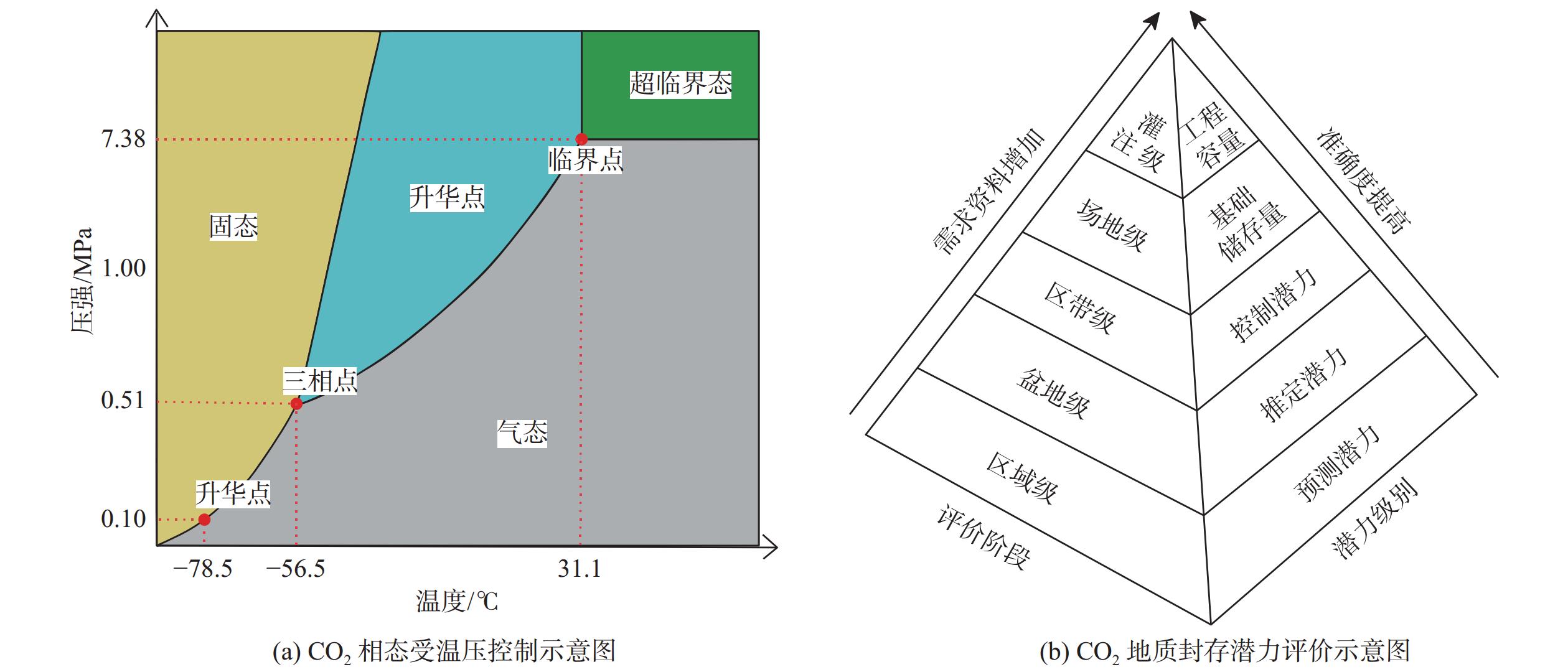
 下载:
下载:
